46 Into the Night
Posted by Christine on May 4, 2015 in Ireland | 4 comments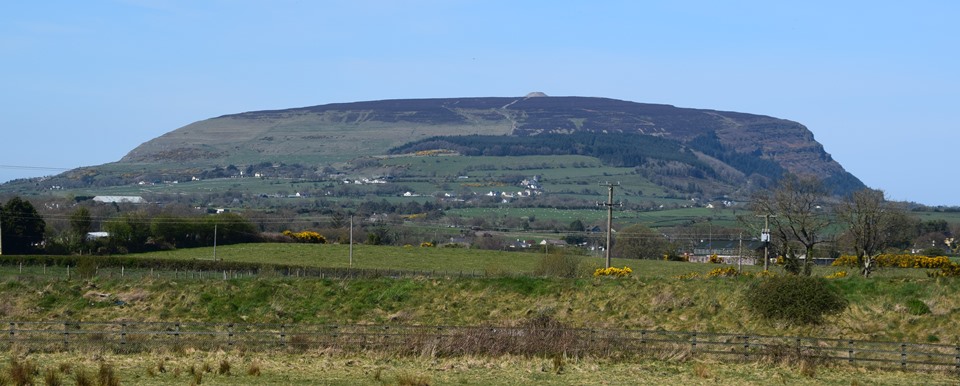
A few weeks ago I spent a morning hunting down a dark, forbidding “pit” that is mentioned in passing in a poem by William Butler Yeats. As is well known, I’m mad to see places where literature or history happened and to “walk in the steps” of the people, the events, the images, or the ideas that came into being in a particular set of coordinates. Yeats’s “pit” or “cleft” or “Alt” or “Glen” has been on my mind for a long time.
In “Man and the Echo,” one of Yeats’s last poems, the speaker–or speakers, depending on your interpretation of the two voices–reflects on his life and life’s work as illness, death, and “night” approach, using the dialogue between a human voice and its echo to probe these vexing questions. The poem was published in The Atlantic Monthly in January 1939, the same month Yeats died, along with two other moody, self-critical poems. The place where the echo cited in the poem occurs is a real one, a rock-faced incision on the slope of Knocknarea in County Sligo. In the poem, Yeats describes it like this:
Man. In a cleft that’s christened Alt
Under broken stone I halt
At the bottom of a pit
That broad noon has never lit….
In Yeats Country around Sligo, literary detectives can easily find the locations of most of the poems that are connected to place. “The Lake Isle of Innisfree” from the eponymous poem, Dooney Rock from “The Fiddler of Dooney,” and Sleuth Wood (actually Slish Wood) from “The Stolen Child” are all sites on Lough Gill near Sligo—well-signposted with parking and paths and noted on all tourist maps. The same goes for Glencar Waterfall, also from “The Stolen Child,” located a few miles from Sligo town on Glencar Lake. which even has a staircase to take you up alongside the noisy torrent—
Where the wandering water gushes
From the hills above Glen-Car,
In pools among the rushes
That scarce could bathe a star…
—and back to the parking lot along a wooded path. A few miles on the other side of Sligo town you can visit Lissadell House, once the home of the Gore-Booth family, where the young Yeats visited often. He later commemorated both the place and the two Gore-Booth daughters in his poem “In Memory of Eva Gore-Booth and Con Markievicz”:
The light of evening, Lissadell,
Great windows open to the south,
Two girls in silk kimonos, both
Beautiful, one a gazelle.
And there are other places associated with Yeats—including his grave at Drumcliff Churchyard that I talked about in “33 Under Ben Bulben”—clearly noted on the numerous maps and brochures available for visitors to “Yeats Country,” both in the Sligo area and in Galway, where Yeats lived later in life. But none of these materials mentions “the cleft that’s christened Alt” where the dialogue between “Man” and “Echo” is supposed to have occurred, perhaps because of the forbidding nature of the place as it is described in the poem and the grim exchange in which “Man” questions the value of his life while having his own dire words thrown back at him by “Echo”—the echo of his own voice. By its nature, “Echo” distorts the words, changing the lament of a sleepless man, “And all seems evil until I / Sleepless would lie down and die,” to the imperative “Lie down and die.”
The shades of the poem close in as Yeats questions the role his popular play Cathleen Ni Houlihan might have played in inciting the participants in the Easter Rising in 1916, not so much ruing the play itself but facing his own failure—inadvertent or not—to work against violence:
All that I have said and done,
Now that I am old and ill,
Turns into a question till
I lie awake night after night
And never get the answers right.
Did that play of mine send out
Certain men the English shot?
As his waking nightmare continues, he worries that he may have contributed to the illness of an admirer and failed to defuse other acts of violence during the struggle for independence.
Did words of mine put too great strain
On that woman’s reeling brain?
Could my spoken words have checked
That whereby a house lay wrecked?
The more I’ve studied Yeats and his poetry, the more I’ve wandered the area around Sligo visiting the locations that inspired him, the more I have been haunted by “Man and the Echo” with its unusually bleak setting and its nagging self-questioning. The absence of the poem’s location from the tourist maps and even from local knowledge intrigued me further. I had to find this place.
So the other day when I was in Sligo to teach a creative writing class at the Sligo Institute of Technology and had a free morning, I persuaded my dear friend Dave Yeates—a distant relation of the poet as it happens, though he didn’t relish the connection in school when teachers expected him to be poetic—to help me find the “cleft that’s christened Alt,” known in modern times, as I had discovered after much online investigation, as “The Glen.”
It was a beautiful sunny morning, the perfect weather to dispel dark thoughts. We had agreed to an early start because we knew we were going to get lost more than once. Dave, who always enters into my crazy plans with the greatest enthusiasm and goodwill, asked a few locals about “The Glen”—they had never heard of it—and did some further Googling, which proved more helpful. We knew The Glen was on or near Knocknarea, a large limestone hill standing by itself on Sligo Bay that dominates the landscape around it (see photo at top). Finally Dave found a few hints as to how to find The Glen. We drove south from Sligo towards the beach town of Strandhill at the foot of Knocknarea.
I’ve looked at Knocknarea from almost every perspective (except from out at sea) and am always amazed at how it changes shape and color depending on the angle and the weather. Ben Bulben is the same way—it’s the magic of the Sligo landscape. Tombs, holy wells, standing stones, and other mysterious manmade structures abound in this part of Ireland, where the natural features of the land—oddly-shaped hills, caves, waterfalls, rocky outcroppings, and more—seem to set the scene for fanciful interpretation. No wonder this area is legend central in Ireland. Knocknarea, for example, is associated with the warrior Queen Medb or Maeve: a five thousand year old unexcavated cairn on the hill’s flat top is known as Medb’s Tomb, though the structure predates the Celtic legends about Medb. Yeats came to the area as a child and learned its mythology from the locals; his earlier poems and plays and his poetic imagination show the influence of his Sligo days, and he contributed his own tales and characters that are celebrated today in local lore.
The roads around Knocknarea were deserted that morning, so no one minded our seemingly aimless driving as we tried to find the way. We knew The Glen was on the western side of Knocknarea, but none of our directions were very helpful, and the roads weren’t marked or obvious. After a couple of trips back and forth along the Strandhill Road, we finally found a turnoff that looked like it might take us around to the west. As we followed the country road past houses and cows, I enlarged the map on my phone.
“Dave!” I cried gleefully, “The road we’re on is called ‘Glen Road.’” Maybe we would find Yeats’s “pit” after all?
Dave’s online search had brought up one suggestion that said we should look for a gate on one side of the road and a well on the other. Of course in the country there are gates everywhere to keep cows and sheep from going where they shouldn’t go, so we made several false stops. And a “well” could be a stream, a trickle, a puddle, or even an underground spring. After several more wrong turns we went back to “Glen Road,” figuring we had not gone far enough. When it looked pretty certain that we were going to find ourselves back on the main road to Sligo in a few minutes, Dave, who was looking out the driver’s side, said abruptly “There’s a well!”
At almost the same moment, looking out the passenger’s window on the downhill side, I said equally abruptly “There’s a gate!” Could we have found The Glen?
There was just enough room for one car to pull partially off the road, though we weren’t worried about traffic since we hadn’t seen any cars for some time. We went over to inspect “the well,” which was clearly a well, a natural spring pooling in a manmade stone structure, though it was so low to the ground and so well camouflaged with vines and leaves I’m surprised Dave spotted it. Across the road, the “gate” was a fairly well-worn piece of fencing across the entrance to a narrow path overgrown with shrubs, also barely visible from the road. Clearly no one had moved the gate or ventured down this path in a long time. With some effort we swung the gate open just enough for us to slide in and started down the muddy trail.
“Cleft” is a very good word to describe The Glen. Imagine a giant knife slicing down the side of huge flat-topped hill and hollowing out a long narrow crevice without slicing through. Though the overgrowth made it difficult to see, as we walked cautiously along the green tunnel of a path that followed the hillside we could just make out a very steep drop to our right and at the bottom, a narrow valley or glen thick with trees and bushes. The steep rock walls of the narrow valley make it a perfect spot for an echo. Though the day was sunny, it was dark down there, and not at all inviting. No wonder “Man and the Echo” is such a dark poem. I kept looking up and out to the blue slivers of sky and Sligo Bay I could see between the trees, almost gasping with relief. From our perch above the cleft we tried out the echo, but it didn’t work. You must have to be down in the rocky crevice for the echo to happen. We were above the cleft, looking down into it, but we weren’t in the cleft. We hoped our path along the top edge would lead us down, but that didn’t prove to be the case, at least as far as we would make it given the muddy, slippery conditions. We edged our way back to the car, relieved to break into the open air and sunshine on the road. I was disappointed about the echo, but excited to have finally seen The Glen if only from above.
Dave and I drove on to the end of the road and doubled back on the next road down the hillside, a residential avenue with several nice houses, each one commanding a stunning view of Sligo Bay. From what we could see, it looked like the back gardens of those houses might have led to a way into The Glen on the downhill side, but there didn’t seem to be anyone around to ask. I resigned myself to leaving that part of the adventure to another day.
With all the glorious vistas of land and sea that the landscape around Sligo offers, you have to steel yourself to experience cold, damp, darkness, and claustrophobia if you’re going to seek out The Glen. I’m not sure even the novelty of its famous echo could make me love the place, but it’s the perfect setting for “Man and the Echo.” The poem examines those chilling dialogues we have with ourselves, late at night as we toss and turn alone in the dark. As if caught in a steep-sided “pit” or “cleft,” we see no way out of the despair that, ironically, we’ve created for ourselves. In the poem “Echo” is not a disembodied voice but Man’s own irresolute self, acquiescing to this despair, sinking “into the night”:
[Man] Waking he thanks the Lord that he
Has body and its stupidity,
But body gone he sleeps no more,
And till his intellect grows sure
That all’s arranged in one clear view,
Pursues the thoughts that I pursue,
Then stands in judgment on his soul,
And, all work done, dismisses all
Out of intellect and sight
And sinks at last into the night.
Echo. Into the night.
Maddeningly, Echo changes Man’s meaning each time, reinforcing only the despair, the giving in to death. But even from the depths of the dark cleft, Man has ears and eyes alive to the potential reprieve of the natural world. We can’t resolve all the questions and doubt that plague us, but we can turn to and perhaps embrace the life going on in the world around us. Yeats ends the poem with a profound summing up of the human condition—one of my favorite lines in poetry: “What do we know but that we face / One another in this place?” He follows that moment of existential clarity with a vital recognition that, as Seamus Heaney has said “the mind’s options are still open” and at the end of the night has “managed to produce a final yes”—a yes to life. *
But hush, for I have lost the theme,
Its joy or night-seem but a dream;
Up there some hawk or owl has struck,
Dropping out of sky or rock,
A stricken rabbit is crying out,
And its cry distracts my thought.
Like my restorative glimpses of the blue sky and open water, the hawk, the owl, the “stricken rabbit / and its cry” jolt the speaker out of the nightmare and open a way out of the pit. The night is over for now, though we know it will come again.
My visit to The Glen shed light on “Man and the Echo,” but I can’t claim to fully understand this complicated poem. I’ll come back to it again and again, as a good poem dictates, making a little more headway along its dark paths each time. I’ve learned from my many expeditions to literary sites that one visit is an important start to understanding the connection between place and the work, but is never enough. I haven’t yet seen “the light of evening, Lissadell” or visited the Lake Isle of Innisfree when “midnight’s all a glimmer,” so I know I have to go back–at night next time. I didn’t hear the Echo at The Glen, didn’t walk along the valley floor, where Yeats heard his own voice echo, holding the moment in his mind for a future poem. But I’m already planning how to find my way back to Knocknarea, up along Glen Road, and down into the dark crevice at the bottom of the “cleft that’s christened Alt,” to try out the echo for myself.
*Harvard Review, No. 4 (Spring, 1993). P. 98.

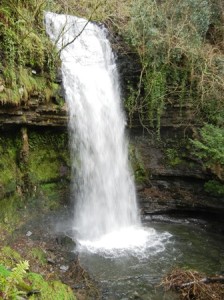
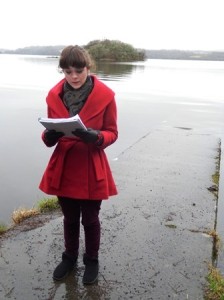
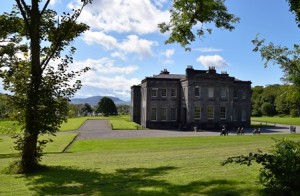
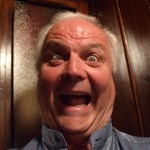
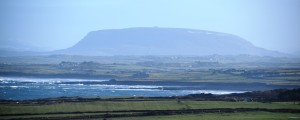
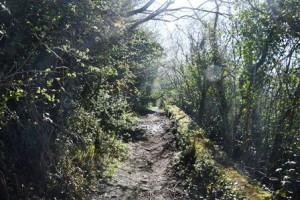
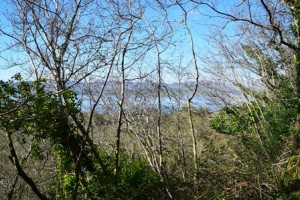
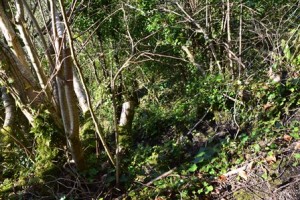

Loved reading your Blog,
Very well said,
Love this post, Christine!
Thank you, Jim!
Not only a wonderful yarn about your adventure and a beautifully composed reflection on an association between place and literary work, but also very helpful to me — thought-provoking and heartening, I would say. Thank you for this, Christine.